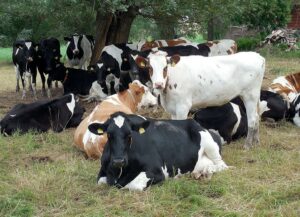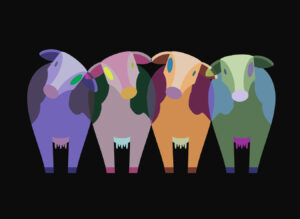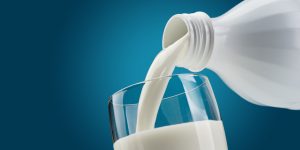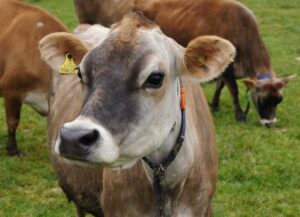Fernando Diaz
Over the past decades, the Holstein breed has undergone the process of extreme selection which emphasized production and conformation rather than fertility and health. This, along with an increasing average inbreeding of Holstein cows, has promoted the use of crossbreeding in U.S. dairy farms.
In order to study the benefits of crossbreeding, researchers from the University of Minnesota (Shonka-Martin et al., 2019) compared the performance of Holstein cows with three-breed rotational crossbred cows including Holstein, Montbéliarde, and Viking Red.
Montbéliarde dairy cattle are originally from France, and according to the Montbéliarde Association, they have been selected for production, functionality, and conformation (greater body condition). The Viking Red cows (includes Swedish Red, Finnish Ayrshire, and Danish Red) produce high-component milk and have been selected for health and fertility.
Cows in the study were born between 2010 and 2015 and calved first time between September 2014 and April 2017. Therefore, this study included cows with 1, 2 or 3 lactations. Cows were housed in a tiestall barn at the Dairy Cattle Teaching and Research Facility in St. Paul, Minnesota, and received an identical total mixed ration.
The authors evaluated both genetic lines during the first 150 days of lactation and reported the following findings in the Journal of Dairy Science:
- Crossbred and Holstein cows had similar body weight (559 kg in primiparous- and 640 kg in multiparous-cows). However, crossbred cows were 3.5 – 4.0 cm shorter and scored 0.2 units greater in body condition.
- Crossbred cows consumed less dry matter during the first lactation (4.7%; 19.2 vs. 20.2 kg) and subsequent lactations (6.5%; 23 vs. 26.kg).
- Crossbred cows had lower milk production than Holstein cows. During the first lactation, they produced 4.3% less than Holsteins (31.3 vs. 32.7 kg/day). Similarly, multiparous crossbred cows produced 5.6% less (42.9 vs. 45.5 kg/d).
- However, there was no difference in milk component production between genetic groups. Primiparous and multiparous cows produced 2.26 and 3.0 kg/day of milk fat + protein, respectively.
- Since crossbred cows produced the same amount of milk fat + protein with lower intake, daily income over feed cost was $0.34 higher for primiparous and $0.60 higher for multiparous crossbred cows.
In conclusion, the results obtained in this study suggest that three-breed rotational crossbred cows may be more profitable than Holstein cows. However, more research is required using completed lactation studies at higher production level to show which breed is the best choice for confined dairy farms.
Reference:
B. N. Shonka-Martin, A. R. Hazel, B. J. Heins, and L. B. Hansen. 2019. Three-breed rotational crossbreds of Montbéliarde, Viking Red, and Holstein compared with Holstein cows for dry matter intake, body traits, and production. J. Dairy Sci. 102:871–882.









